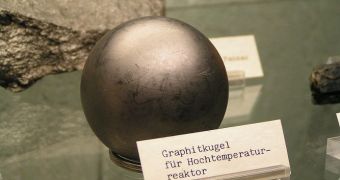For a long time, physicists have said that conventional nuclear power is a lot less safe than a prospective new technology, called pebble-bed nuclear reactor. A proof-of-concept for the new approach should have been constructed in South Africa, but the nation's government announced last week that it would effectively stop funding for this project. The company in charge of building the facilities, Pretoria-based Pebble Bed Modular Reactor (PBMR), is now about to fire about 75 percent of its 800-strong staff, most of which are scientists, physicists and engineers, Nature News reports.
“The resources available to the company will not sustain the current cost structure,” officials at the company announced. The same statement also showed that the new measure was very likely to trigger an exodus of sorts, which would see a large number of nuclear experts leaving the country for more welcoming positions in other countries. However, critics to the new technology say that South African authorities have already funded the project for too long, even if signs showed clearly that no clear outcome would be produced from this effort.
Experts in the African nations began working on this technology in the mid-1990s, when they licensed it from the German Julich Research Center. Authorities hoped that by developing this approach they could transform the country's nuclear energy sector into a lucrative business model that could then be exported in other nations as well. “It caught the mood in South Africa, and the feeling among South Africans was that their technology was as good as anybody's. This was their chance to show the world what they could do,” says University of Greenwich in London energy-policy researcher Steve Thomas.
The PBMR was set up in 1999 by the Johannesburg-based Eskom, which is the country's main electricity producer. The end goal of the research was the development of an economically viable reactor that would use enriched uranium fuel. The thing about the new approach is that the radioactive material would be embedded in graphite sphere called “pebbles,” which are no larger than a tennis ball. The fuel could therefore run at temperatures between 750 and 1,600 degrees Celsius, and also not melt down even if the helium liquid regularly used for cooling was lost. This safety feature persuaded many.
Pebble-reactors are currently under development in the Netherlands and the United States, but the only working prototype that demonstrates this technology is built and used by experts at the Tsinghua University in Beijing, China. Critics to the new technology say that, of all the governments that attempted to implement it, none succeeded.

 14 DAY TRIAL //
14 DAY TRIAL //